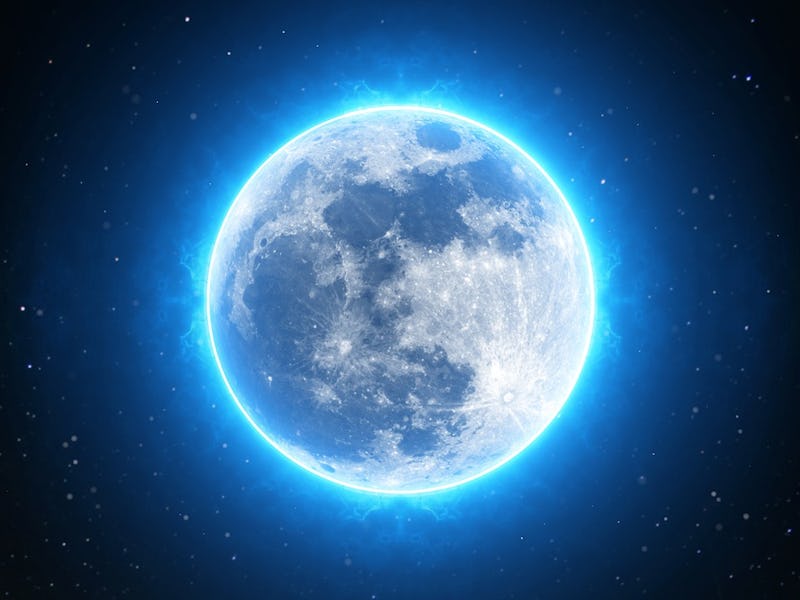Here's Why Saturday's Blue Moon is also a Paschal Moon Tied to Easter
Catch it while you can!

Celestial event nerds have been buzzing this week about Saturday’s hyped blue moon, the last we’ll see for some time. But it’s also a paschal moon, which is specifically tied to the Easter holiday.
This blue moon — the second of 2018 — is the first full moon since the vernal equinox, making it a paschal moon as well. “Easter is celebrated on the first Sunday after the full Moon that occurs on or just after the vernal equinox,” according to the Old Farmer’s Almanac. “This full Moon is referred to as the ‘paschal full Moon.’” This year’s vernal equinox (or the first day of spring) occurred March 20. Because Saturday marks the first full moon following this event, Easter is indeed celebrated on Sunday, April 1 this year.
A blue moon, as Inverse previously reported, is not actually blue. Its name specifically denotes the full moon as being the second to occur in the same month. With that said, this particular blue moon is rad for two reasons. First, it’s the second blue moon to occur in 2018, making this year the first with two blue moons to appear on its calendar since 1999. The next double blue moon in a single calendar year event will happen in 2037.
Assuming you can wait a couple of years, regular ol’ blue moons do occur semi-frequently. Senior editor for Sky & Telescope J. Kelly Beatty explained to Inverse in January why their name is something of a misnomer.
“In 1946, Sky & Telescope blew it,” he told Inverse. “We misinterpreted that traditional definition and started calling a blue moon the second full moon in a month and I guess it stuck. Whatever definition you use, these things happen around every 2.7 years, on average.”
The next blue moon will take place in 2019, and that one will be a seasonal blue moon. So if you’re into this kind of thing, definitely check it out while you can!